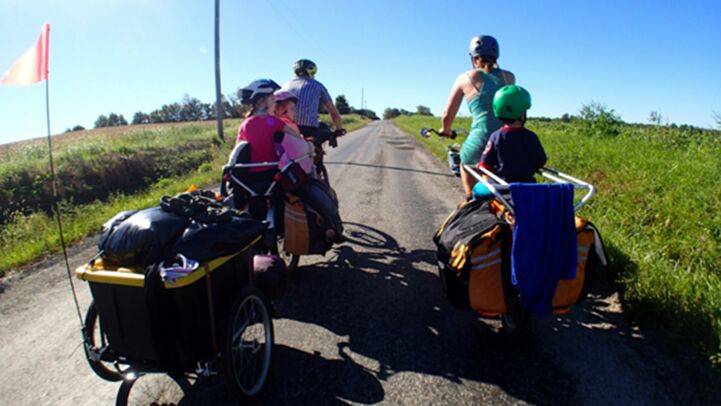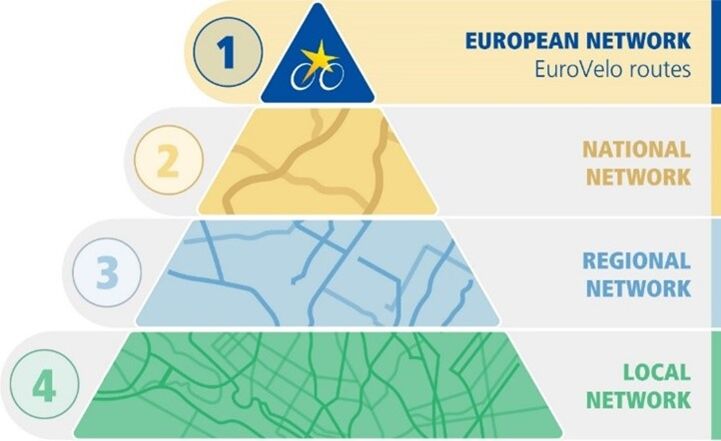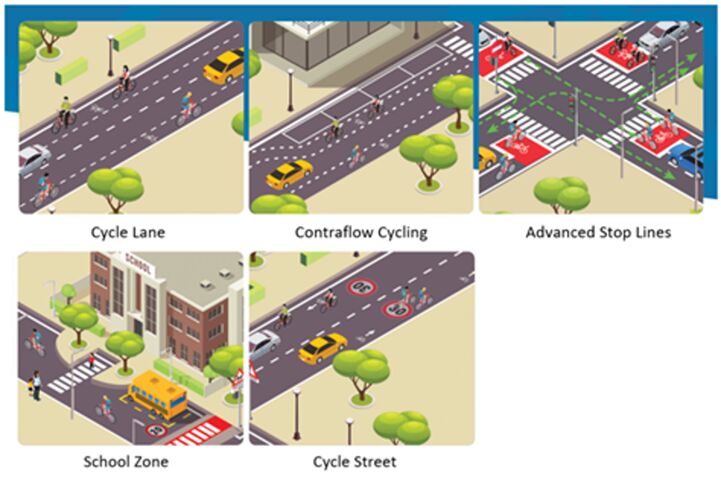The new EuroVelo Development Guide: En route to a fully developed EuroVelo network

The 2024 EuroVelo Development Guide updates and replaces the 2011 Guidance on the Route Development Process manual. The basis for the principles outlined in this guide is the EuroVelo Strategy 2030, aiming for "a fully developed and high-quality European cycle route network, which is well-connected to national, regional and local cycle route networks and other sustainable modes of transport, driving further increases in everyday cycling and cycling tourism, in line with ECF’s vision to improve and increase cycling across Europe".
According to the Strategy, stakeholders involved in the development of EuroVelo should pay high attention to the quality of the routes, which should cater for the needs of the largest possible group of potential users, and their integration into existing or planned cycle networks, also providing easy access to main public transport hubs. In short, the EuroVelo network focuses on inclusivity and connectivity, while other cycle routes can fulfil the needs of specific cycle tourist profiles, such as mountain bikers. Of course, EuroVelo routes should be attractive and interesting in their own right.
In order to help stakeholders to achieve these goals, we have drafted the new, comprehensive EuroVelo Development Guide. This document provides general and specific principles for the development of EuroVelo routes. General principles correspond to the needs and priorities of cyclists that the UNECE Group of Experts on cycling infrastructure identified in its Guide for designating cycle route networks published in 2024: safety, security, directness, continuity, attractiveness and comfort.

Specific principles correspond to development needs that are particular to EuroVelo routes and their characteristics (i.e. long-distance, cross-border cycle routes connecting areas with various speeds of cycling development, linking cities and countryside and sometimes continuing across rivers and seas). There are six of them. They count exceptions and special cases listed in the guide, but in their most general forms they read as:

- The ‘backbone principle’: EuroVelo is intended as a “backbone” of national and local cycle networks to ensure continuity and connectivity between countries. It should be complemented by national cycle routes, including nationally relevant corridors, to satisfy national needs.
- The ‘directness principle’: When defining the itinerary of a EuroVelo route, the most direct connection between major attractions, service centres or access points (big cities, major ferry terminals, border crossings, UNESCO sites, national parks, etc.) should be prioritised.
- The ‘single-track principle’: A EuroVelo route should define a single itinerary and follow a single track. The itinerary should be as much as possible the same in both directions.
- The ‘no local loops principle’: EuroVelo routes should not include loops or detours. When attractions or services cannot be accessed with a direct, logical itinerary, it is recommended to provide a signed connecting cycle route or local loop, not officially included in the EuroVelo itinerary.
- The ‘continuity principle’: In order to complete the EuroVelo network by 2030, continuity solutions should be found in under-developed sections of the network even if quality improvements are expected in the future. In relevant cases, public transport alternatives should be clearly communicated as being a part of the route. Cross-border continuity should be ensured, hence the importance of communicating early on with neighbouring countries on the chosen itinerary.
- Minimising the impact on nature and biodiversity: Biodiversity should be kept in mind when defining the itinerary of and developing EuroVelo routes.

Following these development principles, which are focused on defining the itineraries, the EuroVelo Development Guide also considers the importance of having good national coordination and a legal framework that supports cycle route developments. The guide provides recommendations on governance, coordinating all actors involved in the development of EuroVelo routes at national level, and presents six phases of development: preparatory work, implementation, assessment, promotion, maintenance and monitoring. It also introduces the key elements of good legislation for cycling and gives inspiration on available sources of funding.
Finally, the last chapter lists fifteen good practices on EuroVelo and long-distance cycle routes development from across Europe, illustrating the recommendations and guidelines presented throughout the document. These concrete examples aim to make the general principles more concrete and to provide inspiration for stakeholders confronted to similar issues in their territories.
Written by Florence Grégoire
Cover image: EuroVelo routes as backbones of the Hungarian cycle network